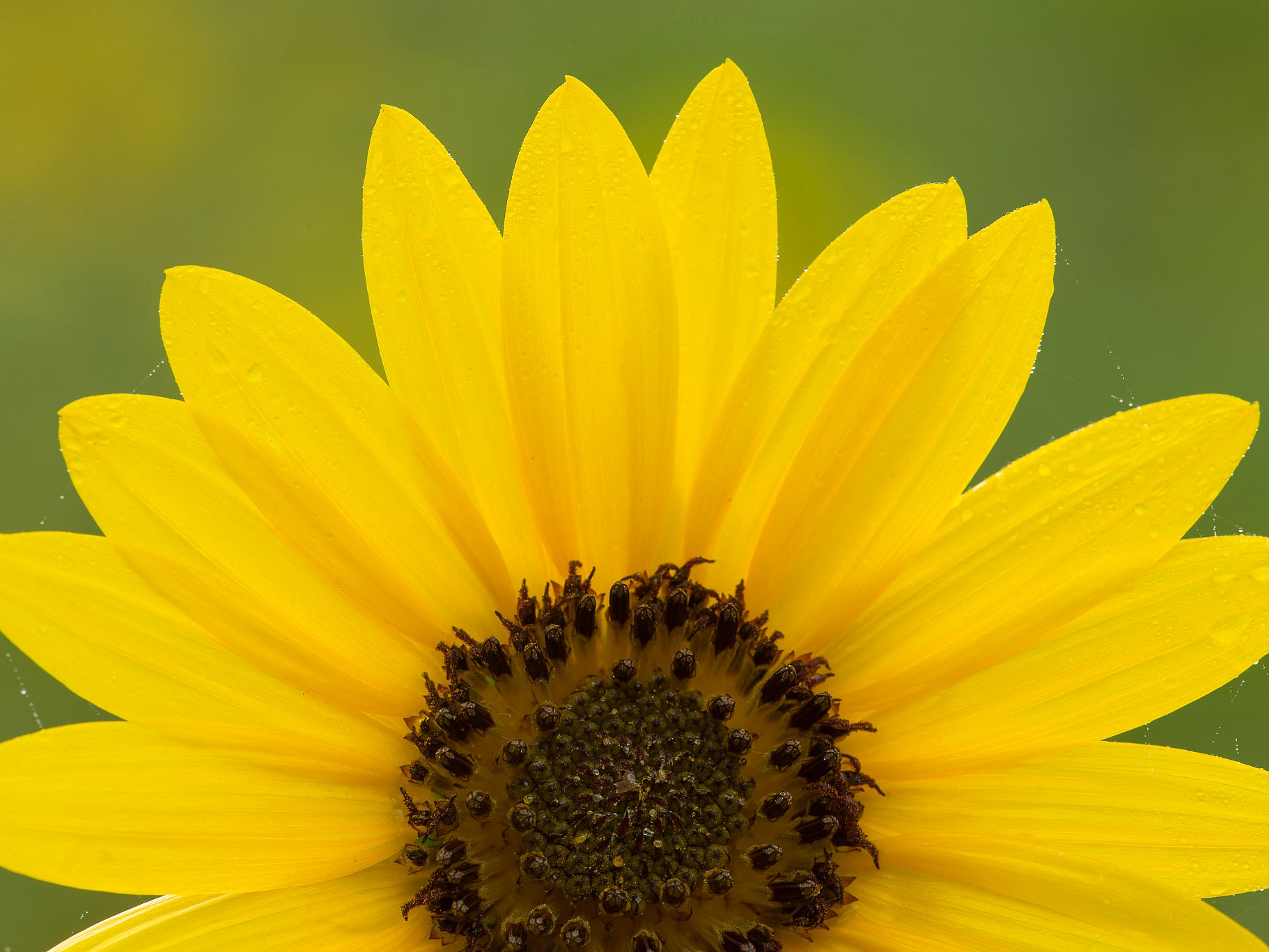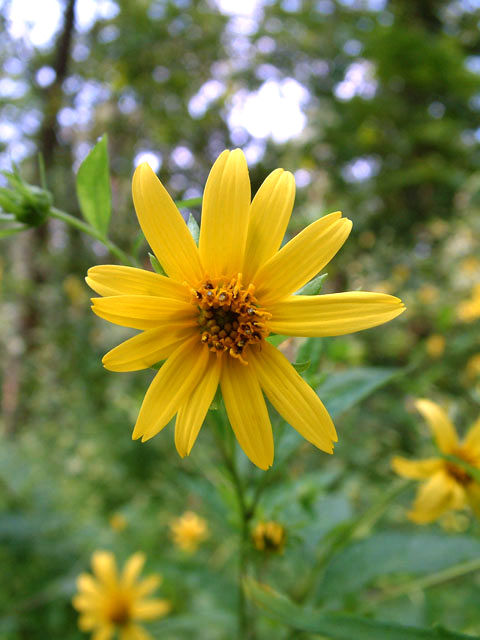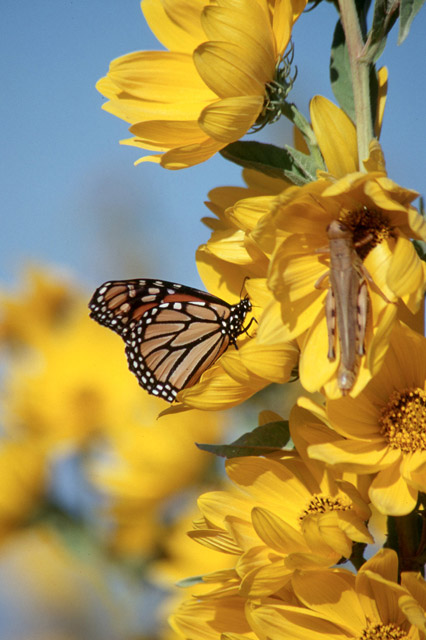Sunny Days

One of the most common wildflowers around is the common sunflower (Helianthus annuus). This is the mother plant from which many of the well-known cultivated sunflowers have been fashioned. PHOTO Wildflower Center
Across the United States in late summer and early fall, bright yellow sunflowers splash color in roadsides, gardens and natural areas. But sunflowers provide more than just beauty for us and food for wildlife. My son’s life-threatening allergy to peanuts has rendered PB&J sandwiches out of the question for our family. Sunflower seed butter has rescued us many a time and is yet another reason to love some of the most beloved plants on earth.
“Those will look good for fifteen minutes,” a garden designer friend kidded me when I thought to line my patio with a row of giant sunflowers. She was referring to the bigger-than-life cultivated sunflowers (Helianthus annuus ‘Russian Giant’ or H. annuus ‘Mammoth’) that boast one single extremely large head. She spoke of the annuals’ relatively short summer bloom period for the garden spot I had in mind.

Another widely known sunflower, sunchoke (Helianthus tuberosus) is a hit in both the garden and the kitchen. Its tuberlike root can be cooked up like a root vegetable. PHOTO Stefan Bloodworth
But what a fifteen minutes that would be! Tell me, what flowers have a better disposition than the sunflower? After all, Vincent Van Gogh’s still-life painting of sunflowers is said to be the work of which he was most proud. In the garden and across the landscape the world over, sunflowers truly are one of nature’s proudest accomplishments.
“People are surprised to learn that those striking ‘flowers’ are not single flowers,” says Native Plants of North America Program Coordinator Joe Marcus. “What you see are actually dozens of tiny individual disk flowers that make up the center of the flower head and ray flowers making up the periphery of the head.”
Cultivated sunflowers generally have one showy head, while “wild” relatives across North America boast multiple heads. If you think sunflowers are nothing but 15-foot, single header plants, you’ll be in for a shock. There are more than 80 species of Helianthus – all native to the Americas. But Tsarist Russians and others beat Americans to commercializing the plants. Ukraine currently leads the world in sunflower seed production and sunflower oil exports.
There are ample widespread native sunflowers to choose from when looking to fill a sunny garden spot. Most are readily available at nurseries and fairly easy to grow. Here are some that won’t disappoint:

A monarch butterfly and an adult grasshopper cling to the flowers of the same Maximilian sunflower plant. PHOTO Carolyn Fannon
Common sunflower (Helianthus annuus)
When choosing a sunflower for the garden, it’s best to consider what look you’re after. Typically four to eight feet in height and widely branched, common sunflower (Helianthus annuus) may bear dozens of flower heads. The Wildflower Center’s now-retired online gardening guru, Mr. Smarty Plants, considers it to be one of the most common wildflowers.
Maximilian sunflower (Helianthus maximiliani)
Unlike the annual common sunflower, this one is an unbranched perennial that usually grows a bit taller than its common cousin to anywhere between three and 10 feet. In nature, flower heads of the two are similar in size but Maximilian’s are arranged closely along the plant’s single stem. Maximilian (Helianthus maximiliani) is an obvious choice for a meadow garden, and wildlife will fight over this one. Propagators have excellent luck with germination when refrigerating seeds over the winter.
Narrowleaf sunflower (Helianthus angustifolius)
At two inches across, this one has smaller flower heads than either Maximilian or common sunflower. It’s at ease in part shade and moist areas – the latter the reason some refer to it as swamp sunflower (Helianthus angustifolius).
Sunchoke (Helianthus tuberosus)
This large sunflower is widely known, probably because it tolerates cold as well as hot climates and dry and moist conditions. Sunchoke (Helianthus tuberosus) has also gained foodie fans that like to dine on its edible and highly nutritious tuber just like Lewis and Clark are said to have done in 1805. The root looks similar to ginger in appearance and has a nutty taste.
Explore more than 80 native sunflowers in our plant database.

